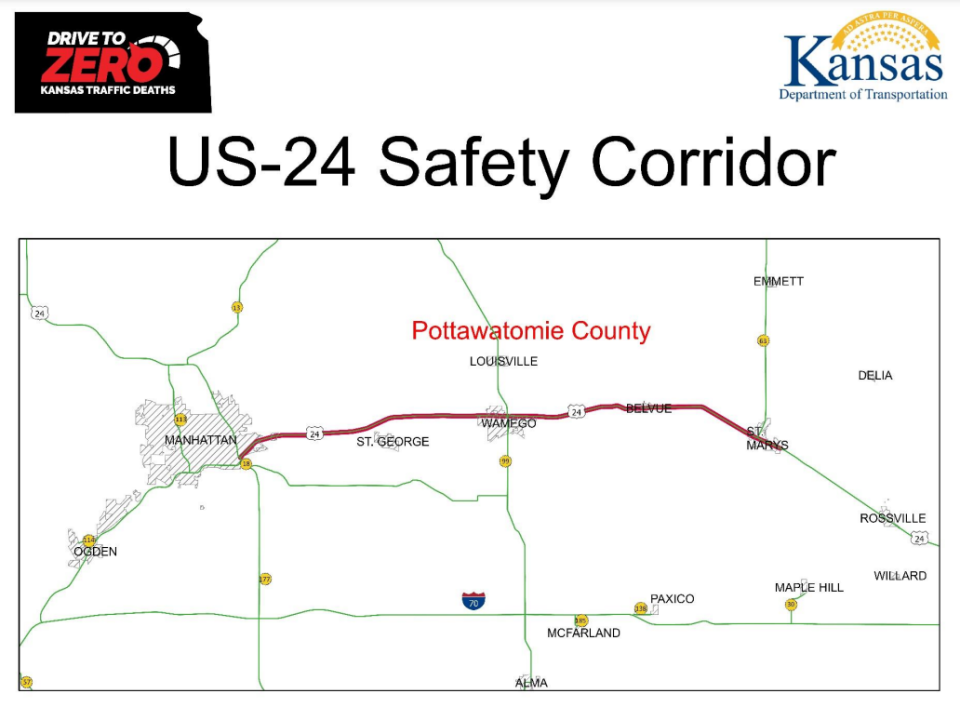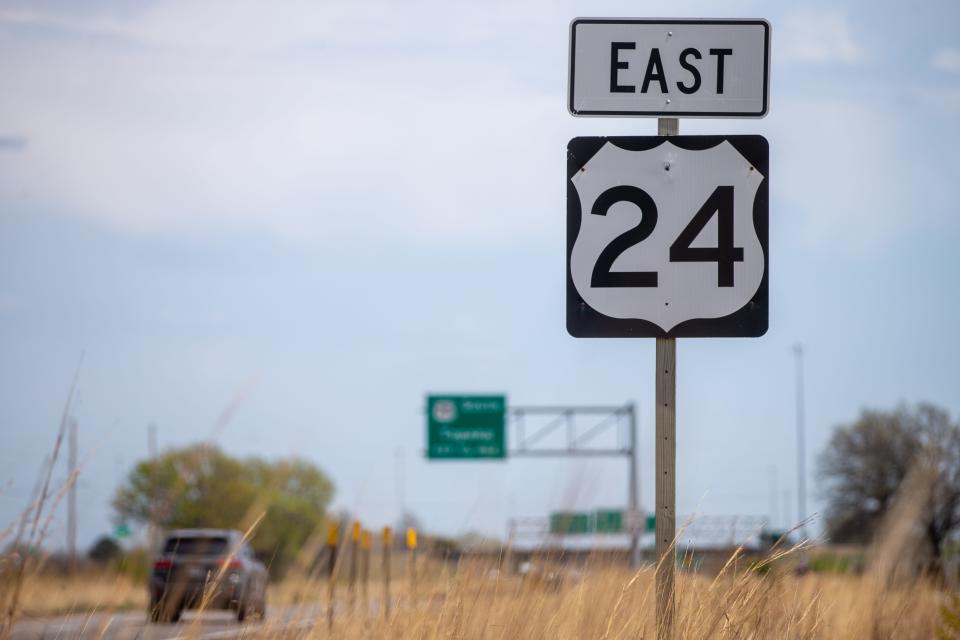These four dangerous stretches of Kansas highways will get increased traffic enforcement
Kansas motorists will see increased traffic enforcement as transportation officials try a number of safety strategies to reduce serious injury and fatal crashes along four dangerous stretches of highways.
The Kansas Department of Transportation on Wednesday announced the new Safety Corridor Pilot Program, targeting four highways based on their histories of deadly and injurious wrecks, including a stretch of US-24 highway west of Topeka.
Where are the safety corridor roads?
Four stretches of highway are included in the five-year pilot program:
I-135 in Sedgwick and Harvey counties, from 53rd Street in Park City to Exit 34 in North Newton.
US-24 in Pottawatomie County, from St. Marys west to Manhattan.
US-83/50 highways in Finney County, from Plymell north through Garden City and west to the Holcomb exit.
US-69 highway in Crawford County, from the US-400 highway junction north through Frontenac and Pittsburg to the US-160 highway junction.
"The safety corridors were selected based on a history of fatal and serious injury crashes, availability of additional law enforcement and input from local transportation safety partners," the state agency said. "From 2016 to 2021, over 500 crashes occurred on these corridors resulting in 35 deaths and 68 serious injuries."
What enhanced safety measures will be included?

Travelers in the new safety corridors will see warning signs that say: "Safety Corridor – Increased Enforcement."
The corridors come with the following:
Increased law enforcement. The high-visibility enforcement efforts are intended to discourage risky driving behaviors.
Traffic safety education campaigns, with messages conveyed through billboards, social media and news outlets.
Engineering improvements. Low-cost improvements could include better pavement markings and signs.
Reviews of emergency response issues.
"Motorists will see and hear targeted media campaigns, signage, and increased law enforcement within the corridors," program materials state. "With more drivers choosing safer speeds, wearing seat belts, and avoiding driving while impaired, we expect increased safety for all road users along the safety corridors."
Schools and businesses along the four corridors will receive educational messages in August. Education, enforcement and short-term engineering efforts will be implemented this year and through at least 2025. Long-term engineering strategies and a program evaluation will be from 2026-28.
Why is KDOT doing a safety project?

The safety corridor program is one of the strategies proposed in the state's Strategic Highway Safety Plan.
The report said other states have seen success from such programs focused on addressing engineering, enforcement, education and emergency medical services.
"In the high-visibility enforcement model, officers focus on drivers who commit common aggressive driving actions such as speeding and following too closely," the report said of the law enforcement strategy.
The Drive To Zero Coalition has targeted its educational efforts at "mitigate risky driving behaviors, including speeding, not wearing a seat belt, impairment and distraction," said Joel Keller, of Cisco, one of the coalition members.
The coalition includes government agencies, politicians, advocacy organizations and businesses. Its objective is to reduce fatal and serious injury crashes in Kansas.
Transportation officials are also promoting other traffic safety campaigns. This month, an anti-speeding campaign funded by KDOT features participation from law enforcement across the state.
How dangerous are the roads I drive?
The Drive To Zero Coalition and KDOT have put together an online database of crashes that resulted in serious injuries or deaths. The interactive map includes crash reports from 2016 through 2021 and will be updated this fall with 2022 data. Officials hope the tool will be used to see trends and work toward safety solutions.
"The Drive To Zero Crash Data Dashboard will help our agency and law enforcement agencies across the state easily pinpoint the most severe crashes or hot spots," said Ottawa Police Chief Adam Weingartner.
The database shows 12 deaths on US-24 between the junction with US-75 highway in Topeka and the junction with K-177 highway in Manhattan. That includes one in Topeka, two in Silver Lake, one between Silver Lake and Rossville, five between St. Marys and Wamego, and three in Manhattan.
Jason Alatidd is a statehouse reporter for the Topeka Capital-Journal. He can be reached by email at jtidd@gannett.com. Follow him on Twitter @Jason_Alatidd.
This article originally appeared on Topeka Capital-Journal: 4 dangerous stretches of Kansas highways to get increased enforcement

